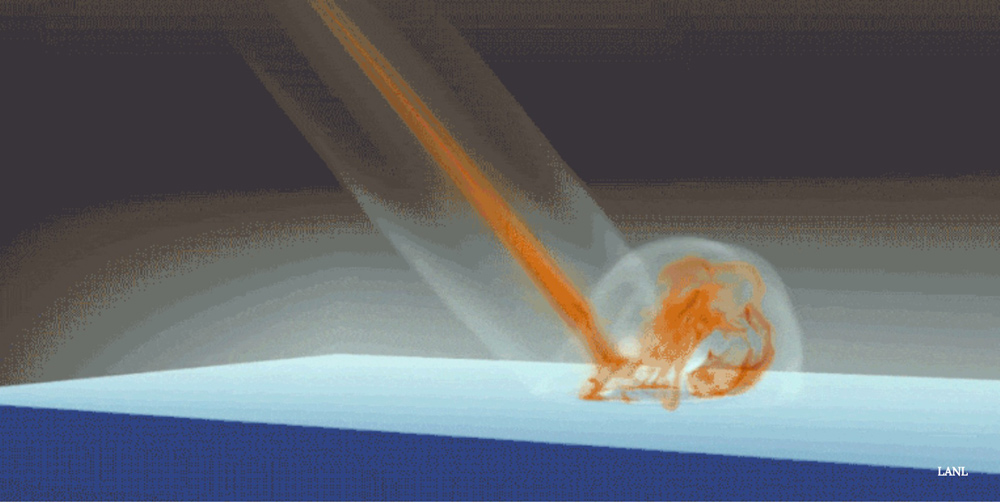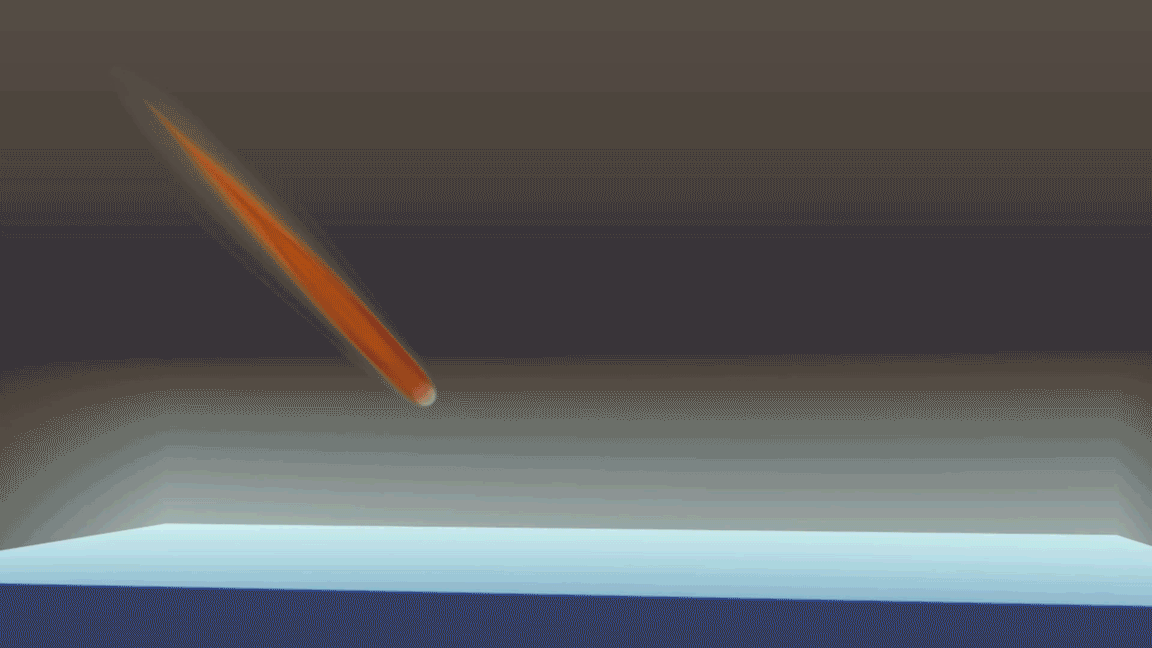If an Asteroid Hits the Ocean, Does It Make a Tsunami? (Probably Not)

Fifteen years ago, Galen Gisler had a gut feeling that something wasn't right about the Hollywood portrayal of asteroid impacts in the world's oceans.
"Movies like 'Deep Impact' and 'Armageddon' suggested that an ocean impact would produce a devastating tsunami that would affect everything along the shorelines surrounding an ocean basin ... but I was skeptical," Gisler, a scientist at Los Alamos National Laboratory in New Mexico, told Seeker.
Generally speaking, getting hit by an asteroid is a bad day for life on Earth, even if it is a part of the natural cycle of living in the dynamic and evolving solar system. Marauding space rocks fly around interplanetary space with no regard for Earth's precious biosphere. If they have our planet in their sights, they're going to hit us. And depending on their mass and speed, they could hit us hard.
But depending on where an asteroid hits, the fallout will vary greatly. If an asteroid was predicted to hit land near a major city, we might be able to evacuate in time (and disaster response agencies have carried out drills that focus on this possibility), but the damage to society, infrastructure and economy would be terrible, obviously. But if an asteroid hits one of our oceans — water makes up for 70 percent of our planet's surface and is therefore a more likely scenario — the scope of the impact is poorly understood.
RELATED: What Happens If an Asteroid Takes Aim at Los Angeles?
Gisler is determined to better understand the realities of a massive impact in the ocean and presented his team's findings at the American Geophysical Union's Fall Meeting in San Francisco last week, showcasing the dramatic 3-D modeling results of an ocean-impacting asteroid. Never before has an impact scenario like this been studied in such detail and the simulation revealed that Gisler's original instincts had merit: devastating post-impact tsunamis we see in the movies are as fictional as the science fiction plot lines they are a part of.
"An asteroid impact is a point source and it only affects the immediate region around the impact point and moreover, to create a tsunami, you need something that disturbs the entire water column," said Gisler.
Breaking space news, the latest updates on rocket launches, skywatching events and more!
He likens an asteroid ocean impact to throwing a rock into a pond. Sure, the energy of the rock hitting the water will produce waves, but the ripples are very dispersive. In other words, they lose their energy very quickly. These dispersive waves in an ocean will be very localized and won't have the energy that a tsunami does. "It's very different physics," he added.
RELATED: Large-ish Meteor Hits Earth... But No One Notices
Tsunamis occur when there's large scale shifts of mass in the seabed, such during a submarine earthquake or landslide. These shifts cause a huge movement in a massive column of water, from the seabed to the surface, that can create wavelengths of a hundred kilometers or more, said Gisler, which is many times longer than the depth of the ocean (of a few kilometers). Tsunamis aren't very dispersive and therefore don't lose energy as they travel through the ocean basin, hitting coastlines hundreds or maybe thousands of kilometers away, often with devastating results.
But that's not to say an asteroid impact in the middle of an ocean wouldn't be dramatic.
"They're spectacular to be sure; they would produce splashes that go up tens of kilometers," he added. According to the model, a jet of water would also protrude from the ocean's surface by a few kilometers, producing rim waves surrounding the transient water crater reaching 400 meters in height. "That's awfully high! But unless it's very close to a shore, it's not going to be very dangerous."
In addition, a significant fraction of the kinetic energy of the impacting asteroid will go into vaporizing huge quantities of water, according to the team's award-winning video explaining the research findings. Water vapor is a potent greenhouse gas, so the injection of vapor into the stratosphere could linger for months or years, altering global climates.
Intense shock waves and violent winds will also wreak havoc on the surface, so the further the impact is from any populated coastal regions, the better.
RELATED: Huge Tsunamis May Have Ravaged Ancient Mars
Gisler's research adds another layer of understanding of how an asteroid impact would affect Earth and, for asteroids of 300 meters wide or less, we could use an ocean impact as a strategy to limit global damage.
"I think it gives us more options. If you find an asteroid in this size range is on a collision course with Earth, and you can't deflect it from hitting the Earth's surface, you might be able to deflect it into the middle of the ocean," he said.
Although NASA and other agencies are working to identify and track asteroids that pose a significant threat to Earth, we could be blind-sided and have little time to prepare a mission to knock the asteroid off course. But now we have more of an understanding about how an ocean impact may go down, we might be able to slightly nudge it toward a new target that will produce less collateral damage, like the middle of the ocean.
Originally published on Seeker.
Ian O'Neill is a media relations specialist at NASA's Jet Propulsion Laboratory (JPL) in Southern California. Prior to joining JPL, he served as editor for the Astronomical Society of the Pacific‘s Mercury magazine and Mercury Online and contributed articles to a number of other publications, including Space.com, Space.com, Live Science, HISTORY.com, Scientific American. Ian holds a Ph.D in solar physics and a master's degree in planetary and space physics.

